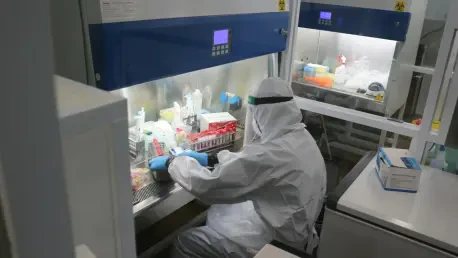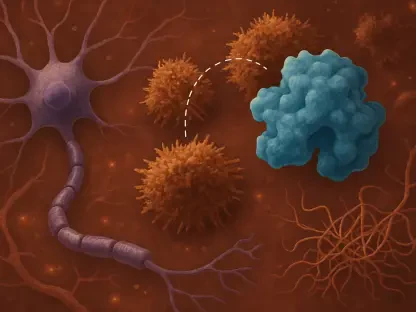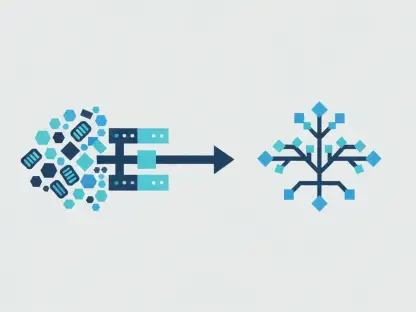In the quest to understand and treat cancer, researchers have faced significant obstacles with traditional models such as two-dimensional cell cultures and in vivo xenografts. These methods, while useful in their own right, often fall short in accurately replicating the complex architecture and cellular functions of human cancer tissues. Tumor organoids, which are three-dimensional in vitro cultures derived from human tumors, present a promising alternative by mimicking the intricacies of cancer tissue more precisely. Their potential to transform cancer research and therapy has sparked considerable attention and enthusiasm, as they offer insights that could bridge current knowledge gaps.
Understanding Tumor Organoids
Origin and Cultivation Techniques
Tumor organoids originate from stem or progenitor cells of human tumors, cultivated under conditions designed to promote growth and differentiation. The process typically involves the use of pluripotent stem cells, adult stem cells, or cancer stem cells dissociated from tumor tissues. These cells are then exposed to growth factors such as epidermal growth factor (EGF) and fibroblast growth factor (FGF), along with small molecules like Y-27632, A83-01, and CHIR99021. Such combinations induce proliferation and the organization of these cells into complex, three-dimensional structures. The cultivation of tumor organoids requires precision; the choice of these factors is critical and impacts the success rate of modeling specific cancers while ensuring minimal contamination by normal cells.
Maintaining the characteristics of the primary tumor is essential to the utility of organoids in research. As such, these cultured models retain key features, including heterogeneous cell compositions and three-dimensional architecture, providing a more accurate representation of human cancer tissues. These attributes make tumor organoids particularly valuable in studying tumorigenesis, metastasis, drug screening, and biomarker discovery. Nonetheless, achieving reliable and reproducible results necessitates stringent experimental conditions, which can be challenging and resource-intensive. Researchers need to standardize protocols and select high-quality reagents to ensure consistency and minimize variability in organoid cultures.
Advantages Over Traditional Models
One of the most notable advantages of tumor organoids over traditional models like 2D cell cultures and in vivo xenografts is their ability to preserve the complexity of cancer tissues. Traditional 2D cell cultures fall short in mimicking the hierarchical organization and intricate interactions of cells within a tumor. Similarly, xenografts, which involve implanting human cancer cells into immune-compromised mice, often face limitations related to species differences and cannot wholly replicate the human-specific cellular environment. Tumor organoids address these challenges by offering a more accurate and efficient platform for studying the behavior and progression of cancer cells.
The enhanced relevance of tumor organoids to human cancer biology enables more nuanced studies of disease mechanisms. They provide a fertile ground for analyzing how tumors grow and spread, identifying potential biomarkers for diagnostic purposes, and testing the efficacy and safety of new drug candidates. The three-dimensional structure also facilitates the study of spatial organization within tumors, which is critical for understanding how different cell types interact and how these interactions affect disease progression. By maintaining the primary tumor’s features, tumor organoids offer a promising avenue for personalized medicine, allowing researchers to tailor therapies based on individual patient tumor profiles.
Challenges in Culturing Tumor Organoids
Standardization and Reproducibility
Culturing tumor organoids involves navigating several technical challenges, primarily related to standardization and reproducibility. Non-standardized methods can introduce variability, ultimately impeding the ability to accurately represent cancer tissues and affecting the reliability of experimental outcomes. To address this issue, researchers emphasize the importance of adopting standardized protocols and using high-quality reagents consistently. Critical components such as cytokines, small molecules, and marker antibodies need to be meticulously selected and validated to ensure they meet strict quality control standards for bioactivity and stability.
Efforts to streamline the culturing process involve developing robust protocols that can be widely adopted across laboratories. Standardizing these methods minimizes discrepancies and enhances the reproducibility of results, making tumor organoids a more reliable tool for cancer research. In addition, the availability of commercial reagents that undergo rigorous testing for consistency and bioactivity is crucial for maintaining the integrity of organoid cultures. Companies that offer validated reagents contribute significantly to overcoming technical inconsistencies and advancing the use of organoids in scientific investigations.
Model Validation and Quality Control
Validating tumor organoid models is a critical step that ensures they accurately reflect human cancer tissues. This involves comprehensive evaluations using various analytical techniques to confirm the presence of key tumor characteristics. Validation processes include assessing the molecular and cellular compositions of the organoids, as well as their functional properties compared to the primary tumors. High-quality reagents and precise methodology are essential in this phase, as any deviations can compromise the model’s fidelity and its applicability in research.
Moreover, maintaining robust quality control measures is vital for ensuring the consistency and reliability of organoid cultures. High-quality reagents, such as thoroughly validated cytokines and marker antibodies, play a significant role in this aspect. These reagents must be tested for their ability to induce specific cellular responses and maintain stability over extended periods. By adhering to stringent quality control standards, researchers can enhance the reproducibility and accuracy of their studies, thereby maximizing the potential of tumor organoids in both basic and translational research.
Implications for Cancer Research
Enhancing Drug Discovery
The application of tumor organoids extends significantly into the realm of drug discovery and development. Their ability to closely mimic human cancer tissue offers a powerful platform for screening novel therapeutic agents and evaluating their efficacy. Traditional models often fail to replicate the complexities of human tumors, leading to discrepancies between preclinical results and clinical outcomes. Tumor organoids, however, provide a more predictive model, allowing researchers to conduct high-throughput drug screens and identify promising candidates with greater accuracy.
Furthermore, the use of tumor organoids in drug discovery facilitates the study of drug resistance mechanisms and the identification of potential combination therapies. By examining how different compounds interact with the complex cellular environment of tumor organoids, researchers can uncover insights into why certain treatments fail and how resistance develops. This knowledge is instrumental in devising strategies to overcome drug resistance and improve therapeutic efficacy. The versatility of organoid models makes them invaluable in the iterative process of drug development, where continual refinement and testing are paramount.
Personalized Cancer Therapies
Tumor organoids hold immense potential in advancing personalized cancer therapies, offering a promising approach to tailoring treatments based on individual patient profiles. By deriving organoids from a patient’s tumor, researchers can create a model that maintains the unique characteristics of that specific cancer. This personalized approach enables the testing of multiple therapeutic options to determine the most effective treatment strategy for each patient. It represents a significant step toward precision medicine, where interventions are customized to achieve the best possible outcomes.
Moreover, tumor organoids can be used to study the genetic and molecular underpinnings of individual cancers, providing insights into the mutations and pathways driving disease progression. This information is critical for developing targeted therapies that address the specific alterations present in a patient’s tumor. Personalized models also facilitate the identification of biomarkers that can predict treatment responses, enhancing the ability to monitor and adjust therapies dynamically. The integration of tumor organoids into clinical settings paves the way for more effective and personalized treatment protocols, ultimately improving patient outcomes.
Future Directions and Considerations
Expanding Applications
The potential applications of tumor organoids in cancer research and therapy are vast and continue to expand as techniques and methodologies evolve. Beyond drug discovery and personalized medicine, organoids are increasingly being used to explore fundamental aspects of cancer biology, such as tumor initiation, progression, and metastasis. By providing a more accurate representation of human cancer tissues, organoids offer unique opportunities to dissect the molecular and cellular dynamics at play in these processes, uncovering critical insights that can inform new therapeutic strategies.
Collaborations between academic institutions, biotech companies, and clinical researchers are driving the advancement of organoid technology, fostering innovation and accelerating progress. As the field continues to grow, ongoing efforts to improve the scalability and accessibility of organoid models are essential. Expanding the availability of standardized protocols and high-quality reagents will enhance the reproducibility and reliability of organoid-based studies, making them a valuable resource for the broader scientific community.
Ethical and Practical Considerations
In the ongoing effort to understand and treat cancer, researchers have encountered notable challenges with traditional models, such as two-dimensional cell cultures and in vivo xenografts. Despite their usefulness, these methods often fail to accurately replicate the complex architecture and cellular functions of human cancer tissues. This limitation hinders progress in understanding and developing effective treatments. Enter tumor organoids, which are three-dimensional in vitro cultures derived from human tumors. These organoids present a promising alternative, offering a more precise mimicry of cancer’s intricacies. Their ability to simulate the complex structure and function of cancer tissues has garnered significant attention and enthusiasm among scientists. Tumor organoids have the potential to revolutionize cancer research and therapy by providing deeper insights and bridging current knowledge gaps. This innovative approach could lead to more effective treatments and a better understanding of cancer, as it offers a more realistic model of how cancer behaves in the human body.









